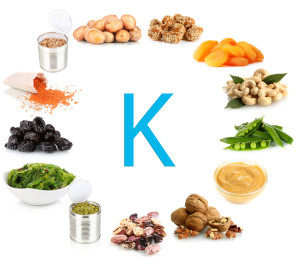Are you tired of hearing about everything you should eat less of? If so, you will be happy to read about something that you can not only eat more of, but that also protects your heart, bones and muscles: potassium!
Heart. Potassium is a mineral that helps relax blood vessels, decrease risk of stroke and reduce blood pressure. It appears to offset some of the damaging effects of a high-sodium (or salt) diet, making blood vessels less stiff as well as helping the body excrete sodium.

Bones. There is a positive link between bone health and a diet high in potassium. Potassium-rich foods produce alkali in the body to maintain acid-base balance. To see how bones are involved, imagine a diet high in grains and protein foods with very little fruits and vegetables. This diet makes the body acidic, sending a signal to bones to neutralize that acid by breaking down bone to release alkali (base). Adding potassium-rich fruits and vegetables to your diet makes the body more alkali, allowing your bones to hold on to their structure.
Muscles. Potassium is needed for muscle contraction, communication between muscles and nerves, and overall muscular function. Since muscles are found throughout your body, including your arms, legs and respiratory and digestive tracts, a diet low in potassium can contribute to fatigue and digestive troubles.
Despite all these benefits, the average potassium intake in the U.S. is only 2,650 milligrams each day, compared to the recommended 4,700 milligrams. So what are the best food sources of this nutrient?
Fruit is naturally high in potassium. In addition to the well-known banana, dried fruit, cantaloupe, peaches, apples and oranges are the highest sources, followed by almost all other fruits. Aim for at least three servings each day, with a serving being ¼ cup dried and ½ cup fresh, canned (in water), frozen or juice.
Vegetables are also high in potassium, with leafy green vegetables leading the way along with orange vegetables such as sweet potatoes and acorn squash. Other vegetables are also good sources, and research suggests we need four servings daily. One serving is just ½ cup cooked or 1 cup raw vegetables, so you could meet your goal with two servings each at lunch and dinner.
Nuts, beans and lentils also contain significant amounts of potassium. One ½-cup serving most days is realistic, especially if you rotate your bean selection between lima, pinto, kidney, great northern, navy and black. Although canned beans are convenient, be sure to rinse them well in a colander to remove excess sodium.
Speaking of sodium, sodium and potassium have opposite effects in the body. People with high-sodium, low-potassium diets are more likely to have high blood pressure, are more likely to die from a heart attack, and are more likely to die from any cause than someone with a higher potassium, lower-sodium diet.
While it may be tempting to take a pill, real food is preferable to potassium supplements and potassium-based no-salt substitutes, especially if you have health issues or take medications; check with your doctor before using these.
Melissa Wdowik, PhD, RDN is an assistant professor at Colorado State University in the Department of Food Science and Human Nutrition, and director of the Kendall Anderson Nutrition Center.